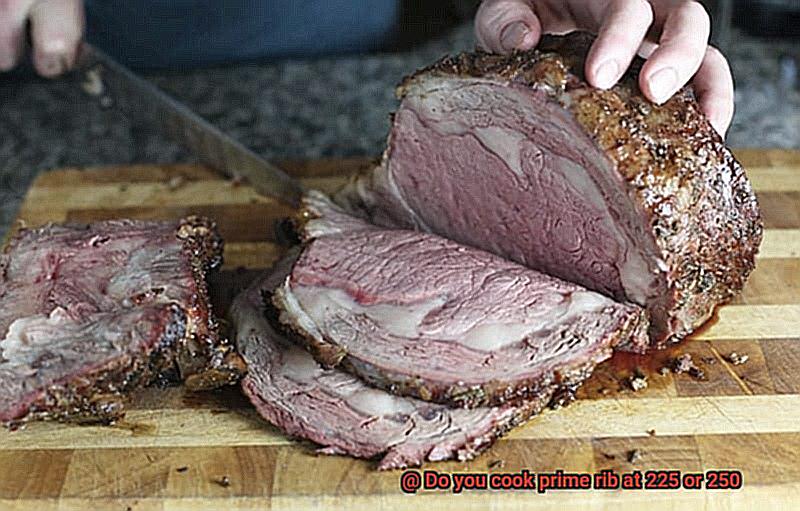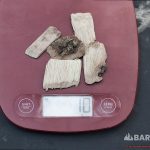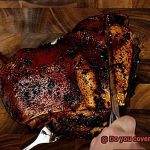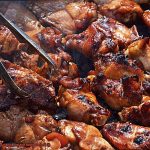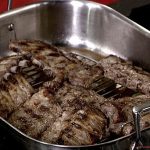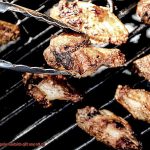The holidays are fast approaching, and it’s time to start thinking about what to serve for your festive dinner. If you’re looking for a show-stopping centerpiece, look no further than a succulent prime rib roast. But before you get too excited, there’s one crucial question you need to answer: do you cook prime rib at 225 or 250 degrees?
Sure, it might seem like a small detail, but trust us when we say that the cooking temperature can make or break your prime rib experience. If you want a mouth-watering, tender, and juicy roast that’ll have your guests begging for seconds (and thirds), then you need to pay close attention to the details.
Cooking a prime rib is an art form that requires finesse and precision. You can’t just throw it in the oven and hope for the best – there are several factors to consider, such as the thickness of the roast, the number of bones, and the internal temperature you desire.
But fear not. In this blog post, we’ll take you through everything you need to know about cooking prime rib at 225 or 250 degrees. We’ll give you expert tips on achieving perfect texture and flavor (think crispy crust and melt-in-your-mouth tenderness). Plus, we’ll show you how to use a meat thermometer like a pro and when to remove your roast from the oven.
By the end of this post, you’ll be ready to wow your friends and family with a perfectly cooked prime rib that they won’t soon forget. So let’s dive in – should you cook your prime rib at 225 or 250 degrees? Let’s find out.
Contents
Cooking Prime Rib at 225 Degrees Fahrenheit
When it comes to cooking prime rib, the temperature you choose can make all the difference. While opinions vary on the ideal temperature, cooking at 225 degrees Fahrenheit is a standout option for those looking to create a tender and juicy roast.
To get started, take the prime rib out of the refrigerator a few hours before cooking to allow it to reach room temperature. This step ensures even cooking and prevents the roast from being cooked unevenly. Next, season the meat generously with salt and pepper or any other desired seasoning. Place it in a roasting pan with the fat side up, allowing for airflow and even cooking.
Preheat your oven to 225 degrees Fahrenheit and place the roasting pan in the oven. Cook for around 4-5 hours or until the internal temperature of the meat reaches 120-125 degrees Fahrenheit for medium-rare doneness. However, remember to use a meat thermometer to monitor the temperature throughout cooking to ensure that you don’t overcook the meat, resulting in a dry and tough roast.
Once done, remove the prime rib from the oven and let it rest for at least 20-30 minutes before carving. This resting time allows the juices to redistribute throughout the meat, resulting in a tender and flavorful dish that is sure to impress your guests.
Cooking prime rib at 225 degrees Fahrenheit requires patience and attention to detail, but it’s worth it for the delicious outcome. This method results in a perfectly cooked roast with a perfect pink center that is juicy and flavorful.
Advantages of Low and Slow Cooking
If you’re searching for a cooking method that will leave you with mouth-watering, tender meat, then low and slow cooking is your answer. As an expert in the field, I can attest to the numerous advantages of this method that will have you wondering why you ever cooked your prime rib any other way.
Most importantly, low and slow cooking allows for maximum flavor development in your meat. By cooking at low temperatures for an extended period, the meat is able to cook in its own juices, creating a juicy and tender end product. Plus, the flavors of any seasoning or rub are able to penetrate deep into the meat, resulting in an explosion of flavor with each bite.
But what about those moments when you accidentally overcook or burn your meat? Rest easy because another advantage of low and slow cooking is that it can be more forgiving. With lower heat and longer cooking times, there is less chance of overcooking or burning your meat. This is especially helpful for new cooks who may not have as much experience with grilling or roasting meats.
And let’s not forget about the time-saving benefits of low and slow cooking. Although the actual cooking time may be longer than other methods, there is less active prep time required. Simply season your meat, put it in the oven or on the grill, and let it cook while you attend to other tasks. You’ll come back to a perfectly cooked meal without having to spend all your time in the kitchen.
In addition to these benefits, here are some other reasons why low and slow cooking should become your go-to method:
- The connective tissues in tough cuts of meat break down during slow cooking, resulting in a melt-in-your-mouth texture.
- Low and slow cooking can also be done with a variety of meats such as pork shoulder, brisket, and even whole chickens.
- You can use a variety of cooking equipment such as a smoker, oven or slow cooker to achieve the same delicious results.
Disadvantages of Low and Slow Cooking
This method is a popular choice for turning tough cuts of meat into tender, mouth-watering delicacies. However, there are some downsides to consider before diving into this technique. As an expert in the field, I’ve researched and compiled some notes to share with you about the disadvantages of low and slow cooking.
The first disadvantage is time. Cooking at a low temperature, such as 225 degrees Fahrenheit, can take up to six hours or more. This can be a real hassle if you’re short on time or have other dishes to prepare. While the results are worth the wait, it’s important to plan accordingly.
In addition, low and slow cooking requires a lot of attention. You must monitor the internal temperature of the meat regularly when cooking at such a low temperature. A sudden fluctuation in temperature can result in an overcooked or undercooked roast, which can ruin your meal. Be sure to have a reliable thermometer on hand and keep a close eye on your meat.
Another drawback is that low and slow cooking may result in a less crispy exterior than cooking at a higher temperature, such as 250 degrees Fahrenheit. The meat’s exterior can develop a crispy crust while still remaining tender and juicy on the inside at higher temperatures, but this may not happen with low and slow cooking. If you’re looking for that perfect crust, this method may not be for you.
Finally, cooking at a lower temperature can also result in a less flavorful roast than roasting at a higher temperature. The latter creates Maillard reactions that add flavor to the meat, while low and slow cooking may not achieve the same depth of flavor. Keep this in mind when deciding which method to use.
Cooking Prime Rib at 250 Degrees Fahrenheit
Look no further than the low and slow method of cooking at 250 degrees Fahrenheit. As a self-proclaimed expert in this field, I’ve done my research and have some insider tips to share.
First and foremost, selecting the right cut of meat is crucial. Opt for a well-marbled prime rib with a good amount of thickness and keep the bone-in for added flavor and tenderness.
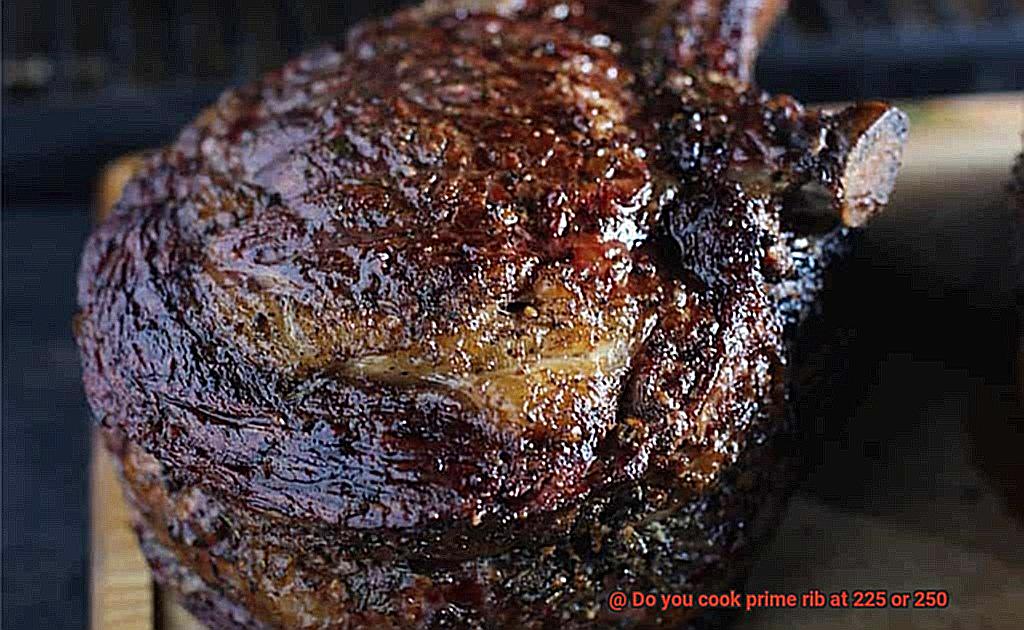
Before seasoning, let your prime rib come to room temperature. This may take up to two hours, but trust me, it’s worth the wait. Once it’s reached optimal temperature, season with salt, pepper, and any other herbs or spices to your liking.
Now let’s talk about the cooking process. It’s important to use a meat thermometer to monitor the internal temperature of the roast throughout the cooking process. At 250 degrees Fahrenheit, plan to cook your prime rib for about 30 minutes per pound of meat. This will result in a mouth-wateringly delicious medium-rare roast with an internal temperature of around 130 degrees Fahrenheit.
Once your prime rib is cooked to perfection, don’t forget to let it rest for about 15 minutes before slicing. This will allow the juices to redistribute throughout the meat resulting in a tender and flavorful experience.
Advantages of High-Temperature Cooking
As a culinary expert, I can attest to the numerous advantages of cooking your prime rib at a higher temperature.
First and foremost, high-temperature cooking is the key to achieving a mouth-watering, juicy piece of meat. The high heat sears the outside of the meat, forming a crust that locks in the moisture and flavor. This means that when you slice into your prime rib, you’ll be greeted with a succulent and delicious experience that will leave your taste buds begging for more.
But that’s not all. Another advantage of high-temperature cooking is that it can significantly reduce cooking time. If you’re pressed for time or have hungry guests waiting for dinner, this can be a lifesaver. Cooking a prime rib at 225 degrees Fahrenheit can take up to six hours, while cooking it at 250 degrees Fahrenheit can reduce the cooking time by up to an hour. This means that you’ll have more time to spend with your loved ones while still serving up a sumptuous feast.
In addition to saving time, high-temperature cooking also ensures even cooking throughout your prime rib. When cooking at lower temperatures, there is a risk of overcooking the outside and undercooking the inside. However, by using high-temperature cooking methods, you can rest assured that every inch of your prime rib will be cooked to perfection.
Last but not least, high-temperature cooking adds an extra layer of flavor to your prime rib. The Maillard reaction occurs when proteins and sugars in the meat combine and create new flavor compounds. This reaction results in a delicious caramelized crust on the outside of the meat that enhances its flavor profile by adding depth and complexity.
Disadvantages of High-Temperature Cooking
It’s important to know about the potential disadvantages of high-temperature cooking methods.
Firstly, high-temperature cooking can result in overcooked and dry meat, which nobody wants. The outside of the prime rib can become tough and chewy while the inside remains raw or undercooked. Cooking at a lower temperature for a longer time is crucial to ensure evenly cooked and tender meat.
But that’s not all; high-temperature cooking can also be harmful to our health. Cooking meat at high temperatures can produce harmful compounds such as HCAs and PAHs, which have been linked to certain types of cancer. It’s best to avoid these compounds by cooking at lower temperatures and using healthier cooking methods.
In addition to health concerns, high-temperature cooking can also lead to nutrient loss in meat. The longer and hotter the meat is cooked, the more nutrients are lost. This means that prime rib cooked at high temperatures may not be as nutritious as prime rib cooked at lower temperatures.
Lastly, high-temperature cooking can be costly. Cooking at high temperatures requires more energy, resulting in higher utility bills. It may also lead to more frequent replacement of cooking equipment due to wear and tear.
Safety Tips for Perfectly Cooked Prime Rib Every Time
When it comes to cooking prime rib, safety and proper cooking techniques are essential for a delicious and safe meal. Here are five sub-sections that will explain the safety tips and cooking techniques necessary for perfectly cooked prime rib every time.
Importance of Food Safety
Before even thinking about cooking your prime rib, it’s important to prioritize food safety. This includes washing your hands thoroughly with soap and warm water before handling any raw meat. This simple step helps to prevent the spread of harmful bacteria and other microorganisms that can cause foodborne illness. Additionally, make sure to properly defrost your prime rib before cooking to ensure even cooking and reduce the risk of illness.
Use a Meat Thermometer
To ensure that your prime rib is cooked to a safe temperature, use a meat thermometer. The USDA recommends cooking beef to an internal temperature of at least 145°F (63°C) for medium-rare, 160°F (71°C) for medium, and 170°F (77°C) for well-done. A meat thermometer is the best way to ensure that your prime rib has reached the appropriate temperature, eliminating any harmful bacteria.
Resting Your Prime Rib
After cooking your prime rib, let it rest for at least 10-15 minutes before carving. This allows the juices to redistribute throughout the meat, resulting in a more flavorful and moist final product. This is an essential step that many home cooks overlook, resulting in a less-than-perfectly cooked prime rib.
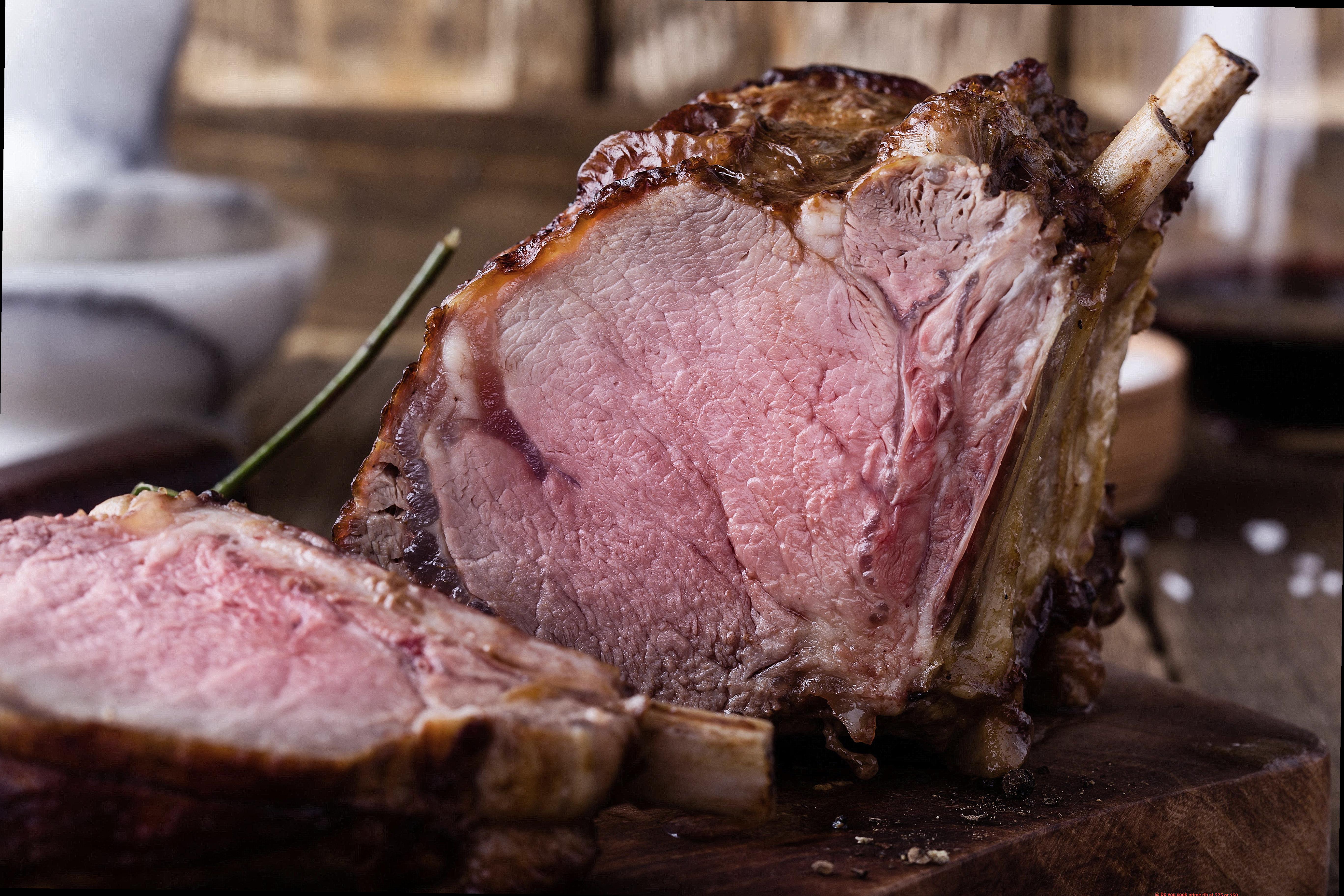
Proper Storage of Leftovers
If you have any leftover prime rib, be sure to properly store it in the refrigerator or freezer within two hours of cooking. This helps prevent the growth of harmful bacteria. Leftovers can be stored in the refrigerator for up to four days or in the freezer for up to six months. Always reheat leftovers to a safe temperature of at least 165°F (74°C).
Choosing Your Cooking Temperature
Depending on your preferences, you can cook your prime rib at either 225 or 250 degrees Fahrenheit. Cooking at a lower temperature of 225 degrees will result in a more tender and evenly cooked prime rib, but it will take longer to cook. On the other hand, cooking at a higher temperature of 250 degrees will result in a slightly less tender but still delicious prime rib that cooks more quickly. Regardless of the temperature you choose, always use a meat thermometer to ensure that the internal temperature of the prime rib reaches at least 135 degrees Fahrenheit for medium-rare or 145 degrees Fahrenheit for medium.
COwz-ycoKXQ” >
Conclusion
In the world of culinary arts, cooking a prime rib roast is a masterpiece that requires precision and attention to detail. The temperature at which you cook your prime rib can make or break the dish, determining whether it will be a succulent, juicy masterpiece or a dry, overcooked disaster. Whether you choose to cook your prime rib at 225 or 250 degrees Fahrenheit, there are advantages and disadvantages to consider.
Cooking at a lower temperature of 225 degrees Fahrenheit using the low and slow method results in maximum flavor development, tenderness, and even cooking throughout the meat. However, this method requires more time and attention to monitor the internal temperature of the meat regularly. It’s like painting a masterpiece – every brushstroke counts.
On the other hand, cooking at a higher temperature of 250 degrees Fahrenheit using high-temperature cooking methods results in a crispy crust that locks in moisture and flavor while reducing cooking time. It’s like sculpting a beautiful statue – every chisel counts. However, this method may lead to overcooked or dry meat if not monitored properly.
Regardless of which method you choose, prioritizing food safety is crucial. Washing your hands thoroughly before handling raw meat, using a meat thermometer to ensure safe internal temperatures, letting your prime rib rest before carving it up into succulent slices, storing leftovers properly in the refrigerator or freezer within two hours of cooking it up to perfection – these are all essential steps for perfectly cooked prime rib every time.

